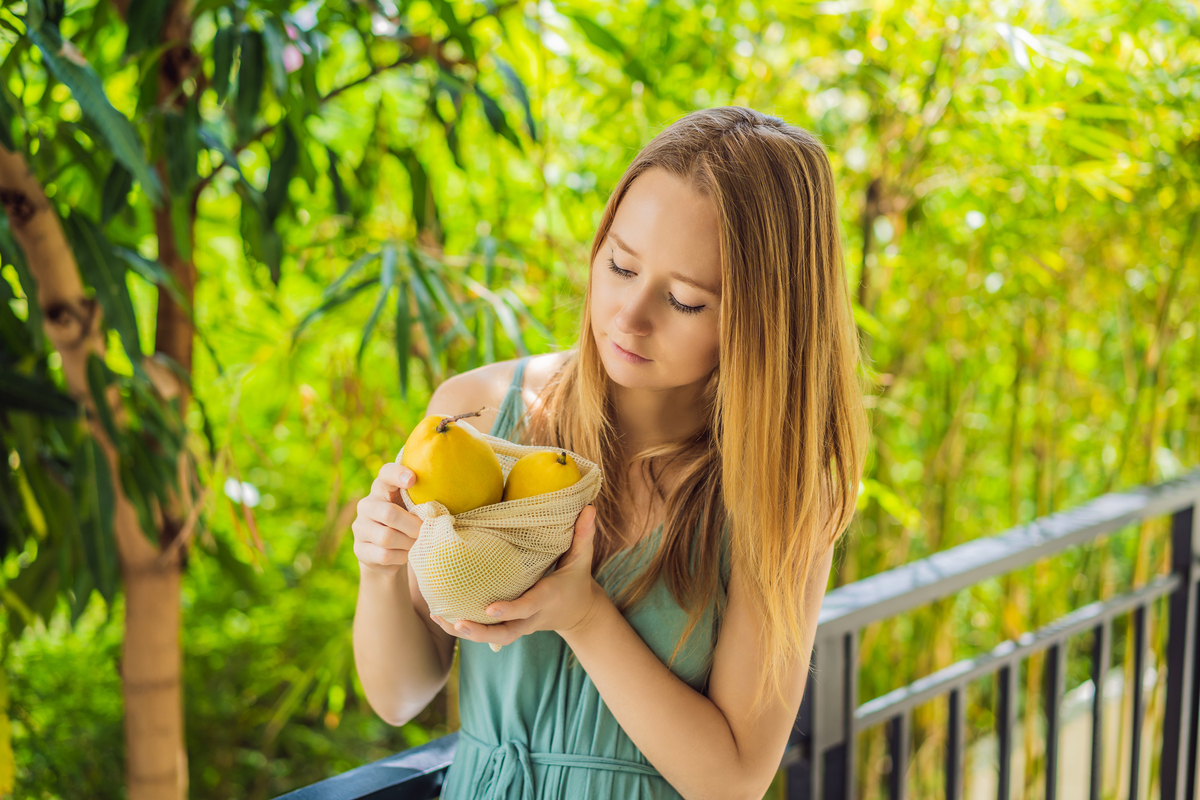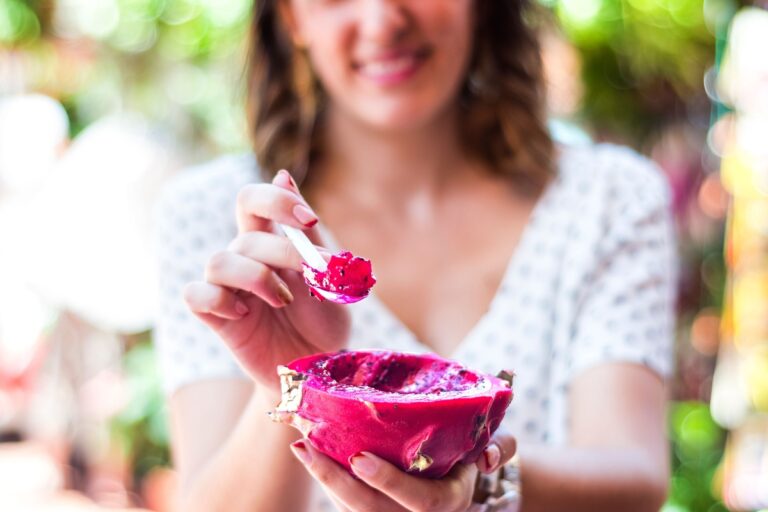15 Exotic Fruits You’ve Probably Never Heard of or Had the Pleasure of Tasting
The world is full of incredible fruits, many of which you may have never heard of. While apples, bananas, and oranges are common in most households, plenty of lesser-known fruits offer unique flavors, textures, and health benefits.
These exotic fruits come from tropical forests, remote islands, and far-off places, bringing a taste of something new and exciting. If you’re ready to step out of your comfort zone and try something different, here are several exotic fruits you’ve probably never heard of or tatsed.
Rambutan
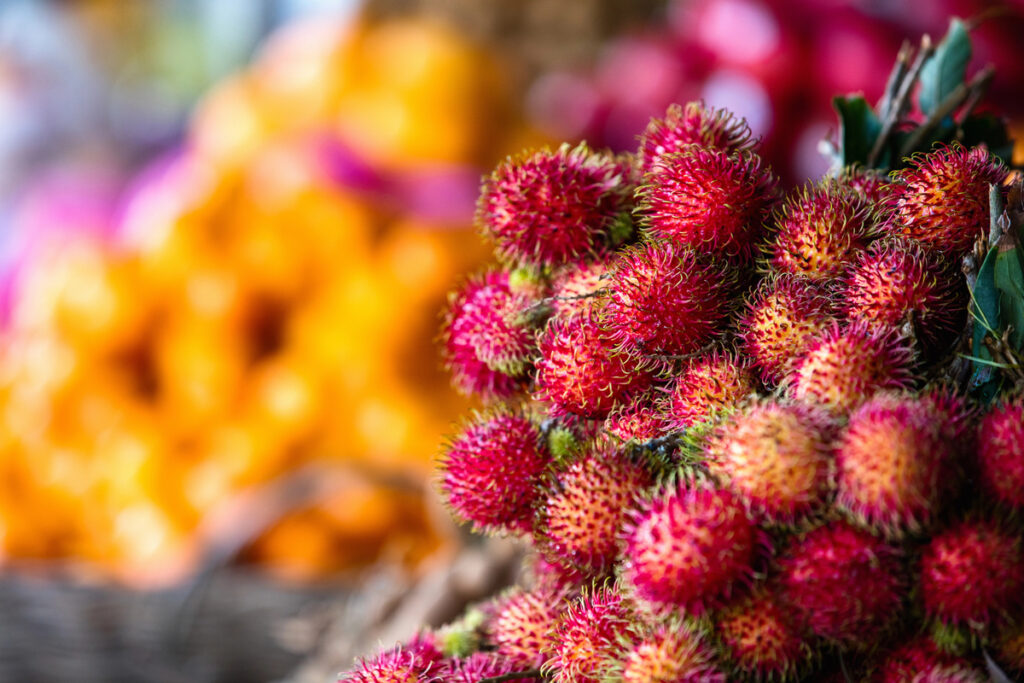
Rambutan is a small, hairy fruit that grows in Southeast Asia and resembles a lychee. Beneath its red, spiky exterior lies a soft, white flesh that is sweet and juicy. The taste is often compared to a mix of grapes and pears, with a mild, refreshing flavor.
Rambutan is rich in vitamin C, iron, and antioxidants, making it a healthy snack. It’s typically eaten fresh, but it can also be used in salads or desserts. Despite its unusual appearance, rambutan is a delicious and nutritious fruit worth trying.
Mangosteen
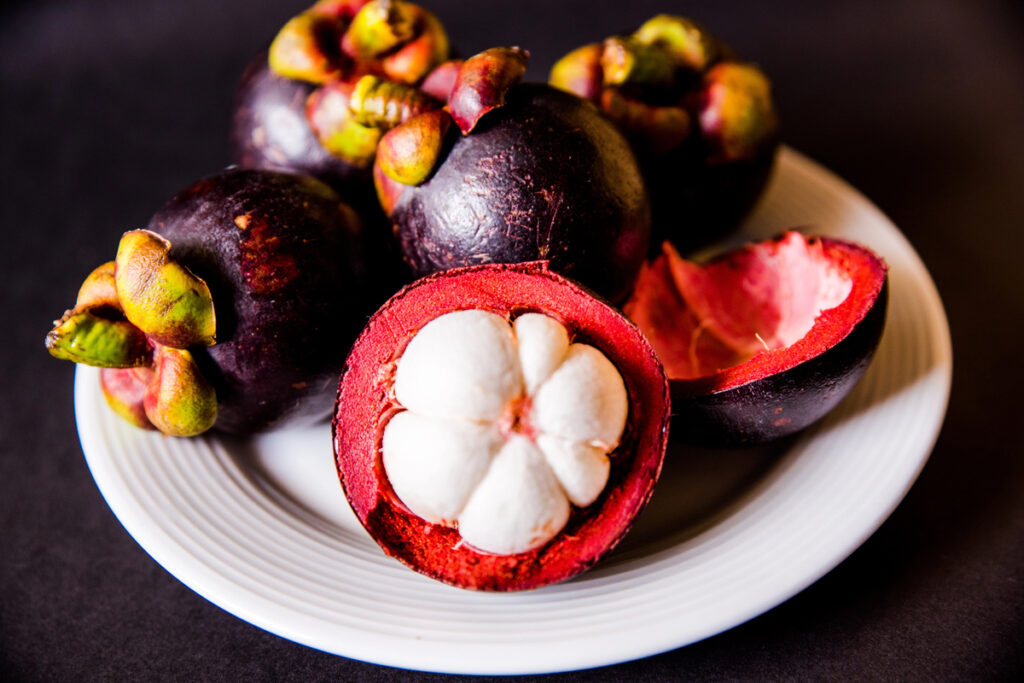
Mangosteen is known as the “queen of fruits” in Southeast Asia, prized for its sweet and tangy taste. It has a thick, dark purple rind that protects the soft, white segments inside. The flavor is a combination of peach, strawberry, and vanilla, with a hint of citrus.
Mangosteen is also packed with antioxidants and is believed to have anti-inflammatory properties. The fruit is typically eaten fresh but can also be used in juices or smoothies. Its unique taste and health benefits make mangosteen a must-try exotic fruit.
Durian
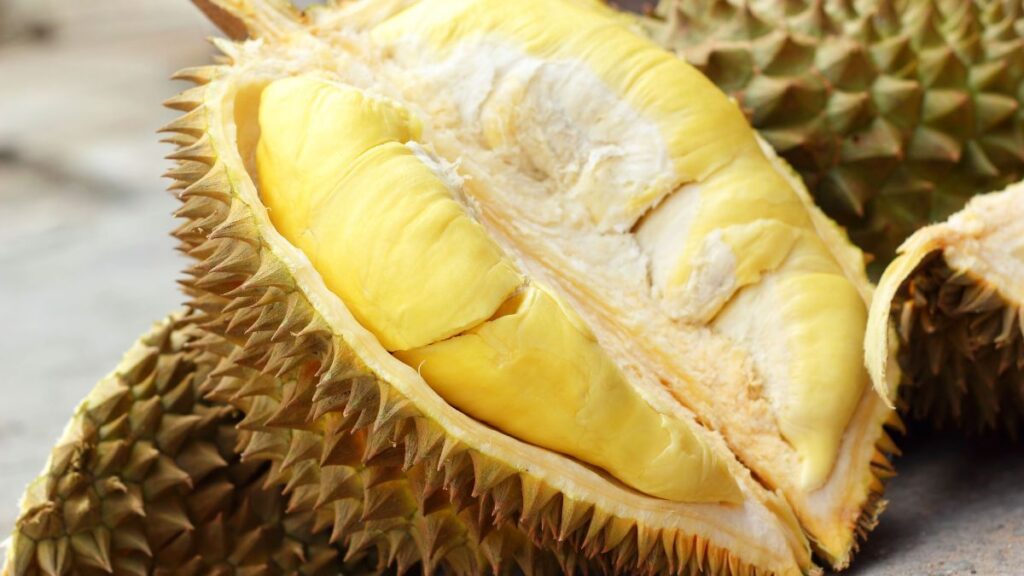
Durian is famous for its strong smell, which has earned it the nickname “the king of fruits.” While its pungent odor can be off-putting to some, durian’s creamy, custard-like flesh is loved by many in Southeast Asia.
The flavor is rich and sweet, with hints of almonds and caramel. Durian is also a good source of vitamins C and B, as well as healthy fats. It can be eaten fresh or used in desserts like ice cream or cakes. Despite its divisive smell, durian is a fruit you should try at least once.
Salak (Snake Fruit)
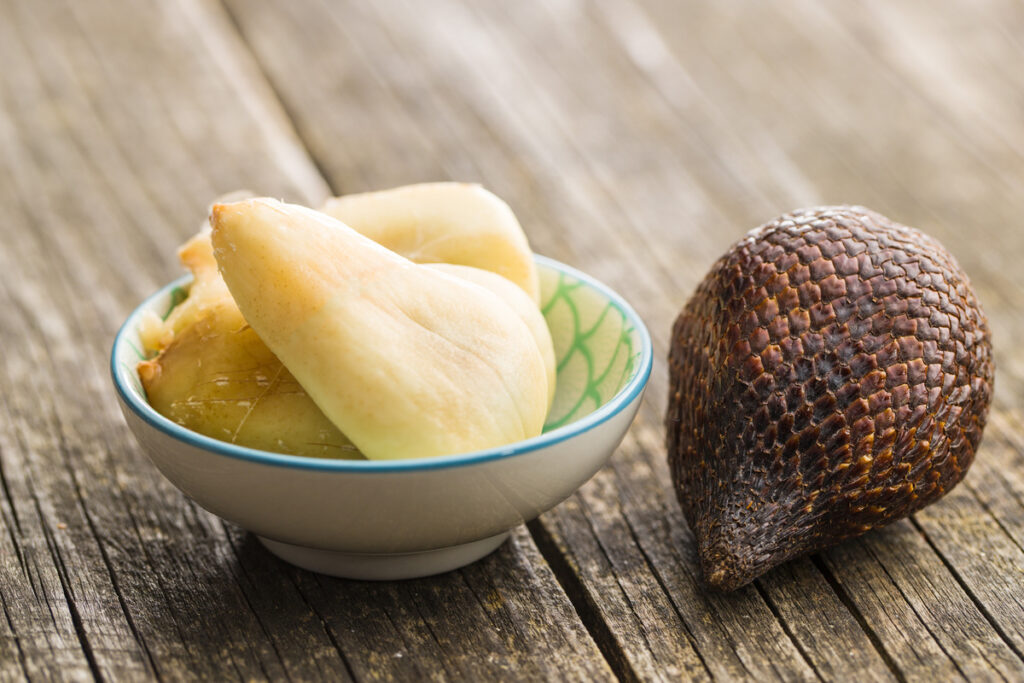
Salak, also known as snake fruit, gets its name from its reddish-brown, scaly skin that resembles a snake. This fruit, native to Indonesia, has a sweet and slightly acidic taste, often compared to apples or pineapples.
The flesh is crisp, juicy, and refreshing, making it a popular snack. Salak is rich in fiber, vitamin C, and antioxidants, making it both tasty and healthy.
Salak is usually eaten fresh, but it can also be made into jams or pickles. With its unique texture and flavor, it is an exotic fruit worth exploring.
Chayote
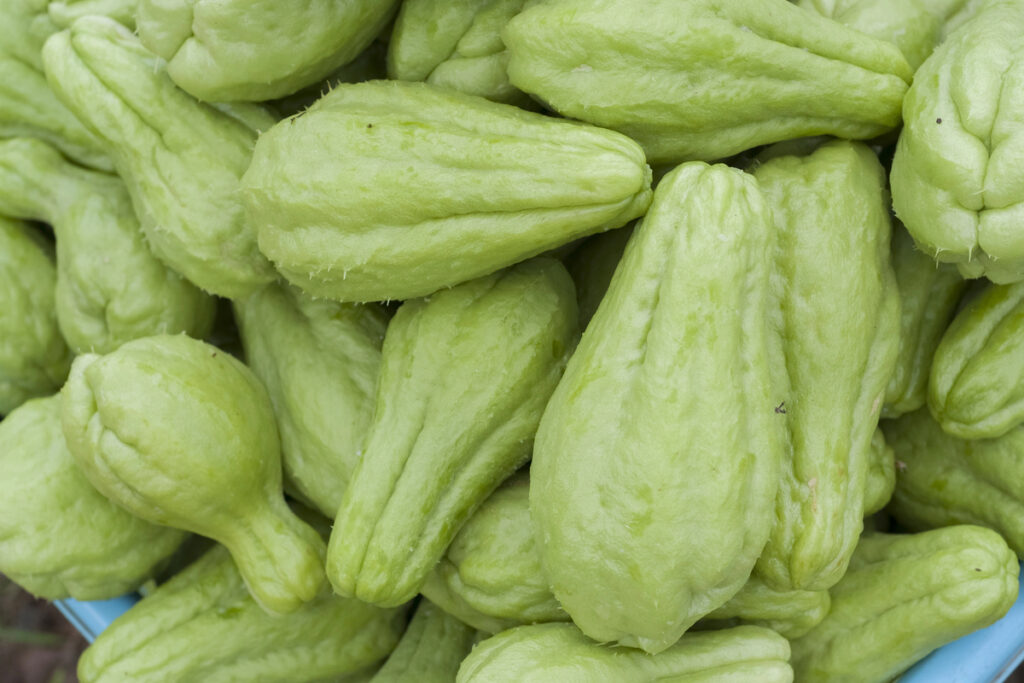
Chayote is a green, pear-shaped fruit popular in Latin American and Asian cuisines. Unlike many other fruits, it has a mild flavor similar to a vegetable, often compared to zucchini or cucumber. Chayote can be eaten raw in salads or cooked in stews, stir-fries, or soups.
It’s a great source of vitamin C, folate, and fiber, making it a nutritious addition to any meal. Its versatility in cooking has made chayote a staple in many kitchens around the world. If you’ve never heard of it, now’s the time to give it a try.
Lucuma
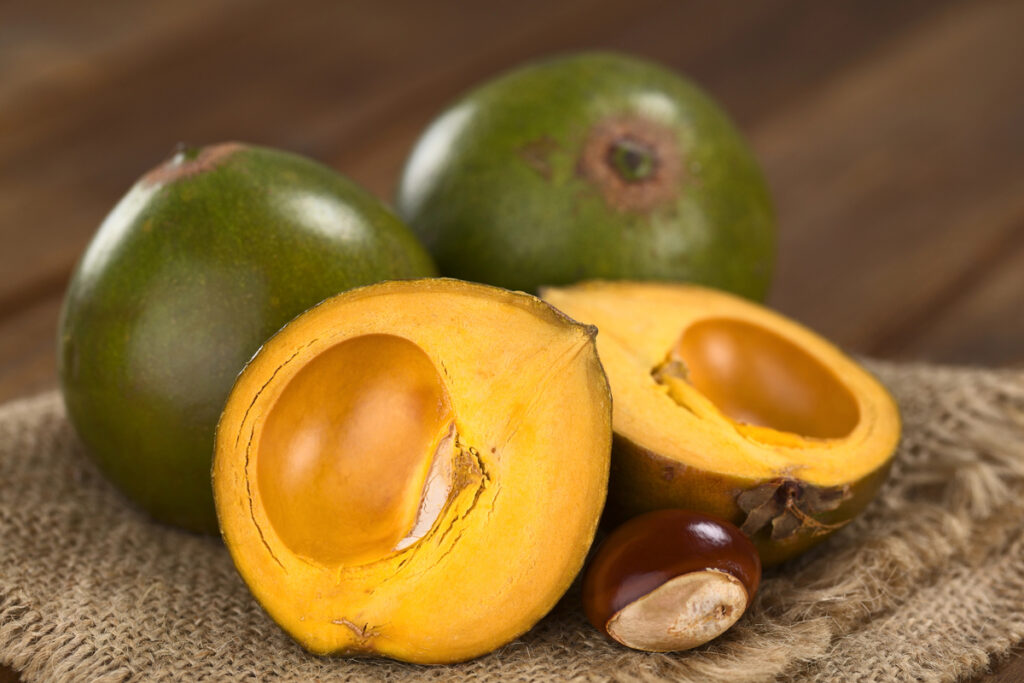
Lucuma is a sweet, golden fruit from Peru that is sometimes called “gold of the Incas.” It has a dry, creamy texture and a flavor often described as a mix of maple syrup and sweet potato. Lucuma is a popular ingredient in Peruvian desserts, ice cream, and smoothies.
It’s also rich in antioxidants, fiber, and essential vitamins like B3. The fruit is often dried and powdered, making it easy to use in baking or as a natural sweetener. Lucuma offers a unique taste worth exploring, especially for those with a sweet tooth.
Buddha’s Hand
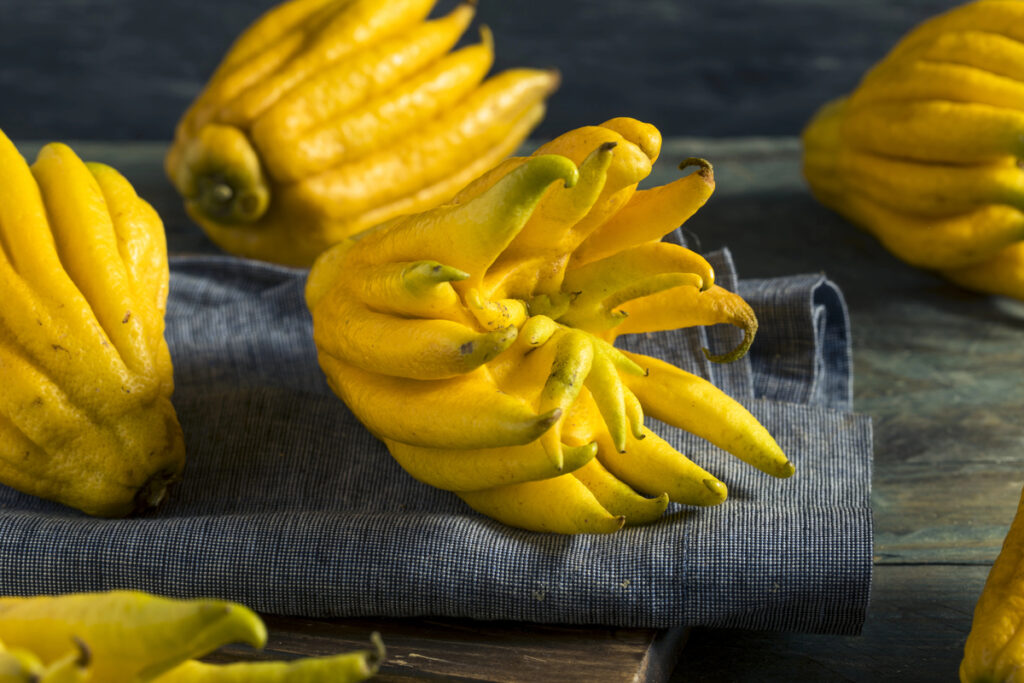
Buddha’s Hand is one of the most unusual-looking fruits, with long, finger-like sections that resemble a hand. This citrus fruit is primarily used for its fragrant zest, as it lacks the juicy pulp found in other citrus fruits.
Buddha’s Hand’s aroma is a mix of lemon and lavender, making it perfect for flavoring dishes, desserts, or even cocktails. Because of its strong, pleasant scent, it is also used in perfumes and incense.
While it may not be something you eat whole, it’s a fantastic ingredient to experiment with in the kitchen. Its striking appearance also makes it a beautiful decorative fruit.
Miracle Fruit
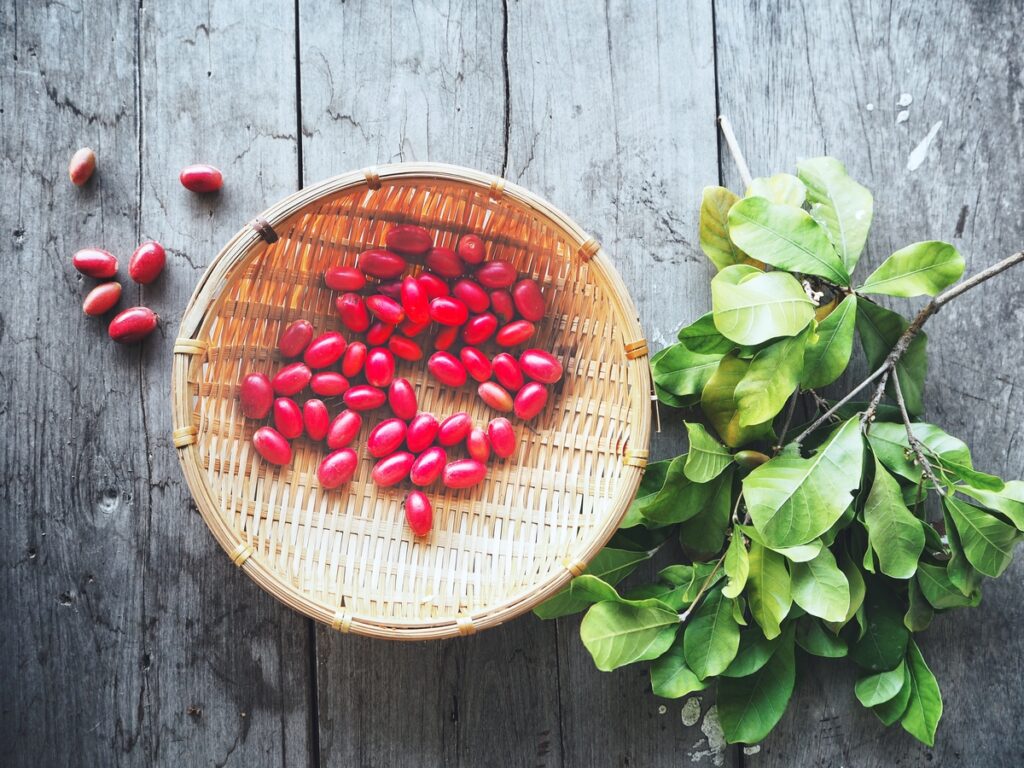
Miracle fruit is a small red berry from West Africa that has a remarkable ability to make sour foods taste sweet. This is due to a protein called miraculin, which temporarily alters taste buds.
After eating miracle fruit, foods like lemons and vinegar taste sweet, almost like candy. The effect lasts about an hour, making it a fun fruit to try for an interactive eating experience.
While miracle fruit has a mild, slightly tangy taste, its ability to change flavors makes it so unique. It’s often used in flavor-tripping parties, where people sample various sour foods after eating the fruit.
Jabuticaba
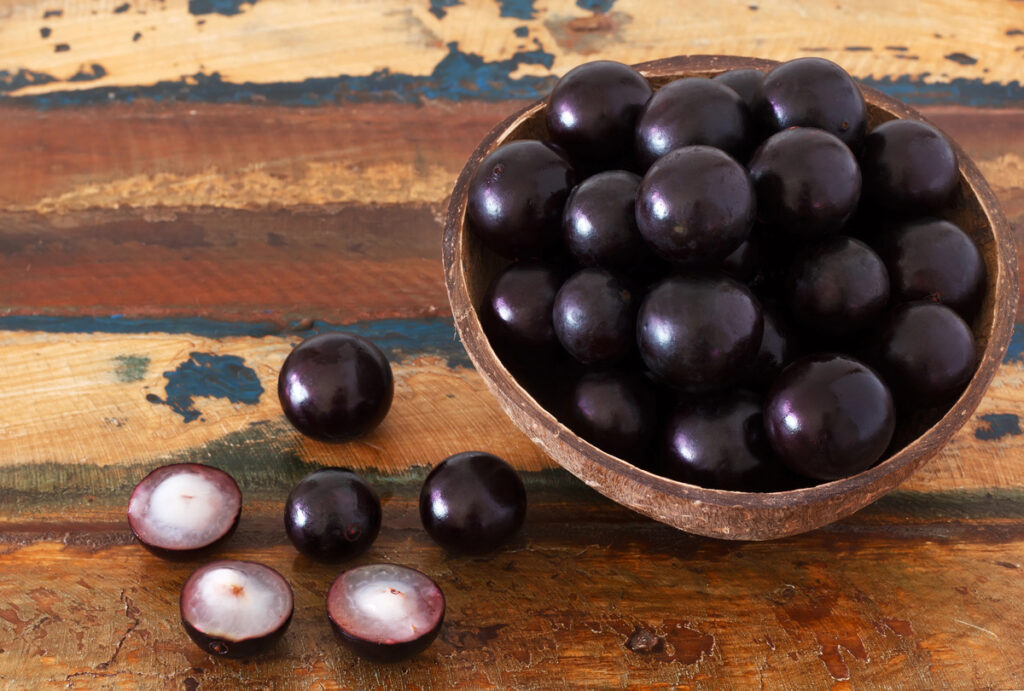
Jabuticaba is a unique fruit from Brazil that grows directly on the trunk of its tree, giving it a striking appearance. The fruit resembles a small, dark purple grape with a sweet, tart flavor.
Jabuticaba is often eaten fresh, but it’s also used to make jellies, wines, and liqueurs. The fruit is rich in antioxidants, particularly anthocyanins, known for their anti-inflammatory properties.
Its unusual growth pattern and delicious taste make jabuticaba a fun and exotic fruit to try. It’s a hidden gem you won’t find in many places outside Brazil.
Cherimoya
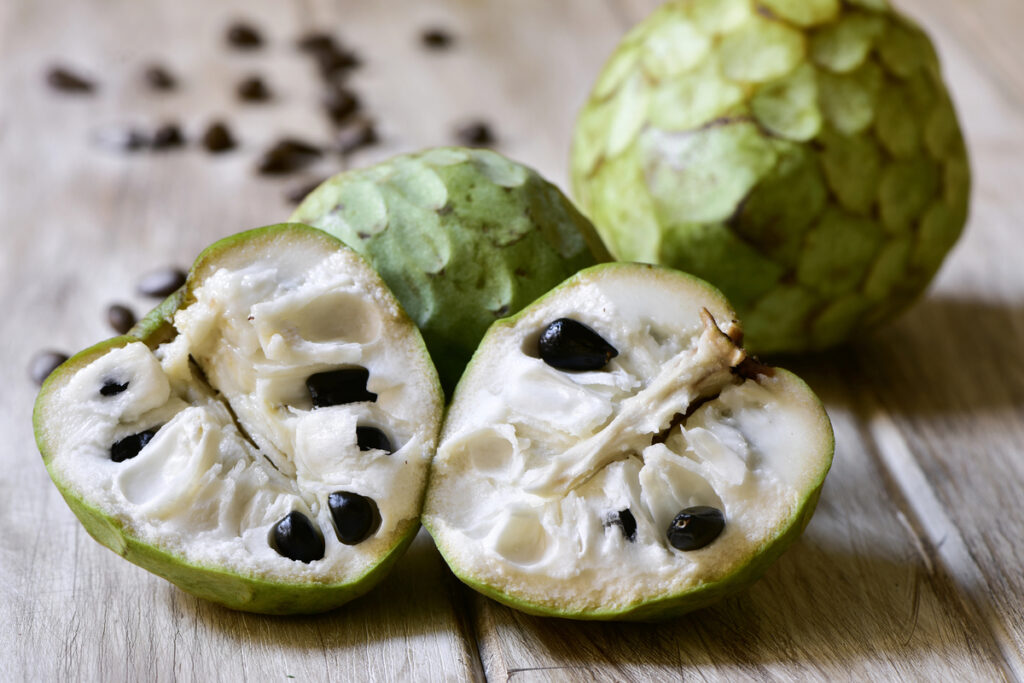
Cherimoya, also known as the “custard apple,” is a heart-shaped fruit with creamy, custard-like flesh. Its flavor is sweet and tropical, with notes of banana, pineapple, and strawberry. Cherimoya is often eaten with a spoon, as the soft flesh easily scoops out of its green, scaly skin.
Cherimoya is native to the Andean valleys of South America and is highly prized for its unique taste and texture. The fruit is rich in vitamins B and C and fiber, making it a nutritious snack. Cherimoya is one to add to your list if you enjoy tropical fruits.
Langsat
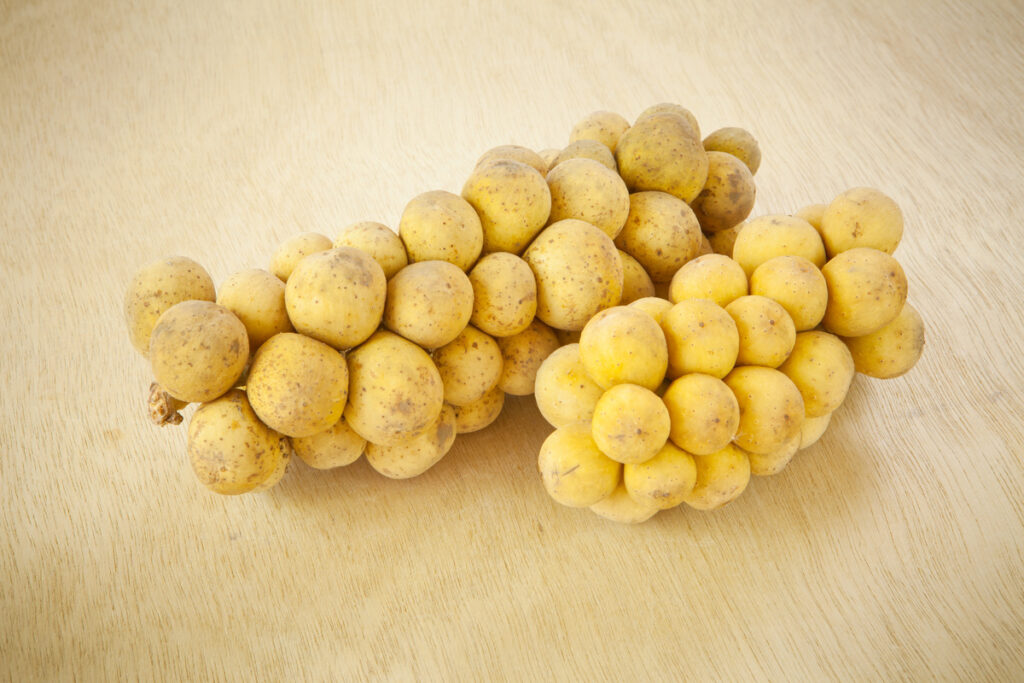
Langsat is a small, round fruit native to Southeast Asia. It grows in clusters and has juicy, translucent white flesh. The fruit’s flavor is sweet and slightly sour, similar to that of a grape. Langsat is often eaten fresh, but it can also be used in jams or desserts.
Langsat is packed with vitamin C and antioxidants, making it a healthy choice. It’s not as well-known as some other tropical fruits, but its delicious taste and refreshing juiciness make it worth seeking out.
Langsat is a great option if you’re looking for a fruit with a balance of sweet and sour flavors.
Sapodilla
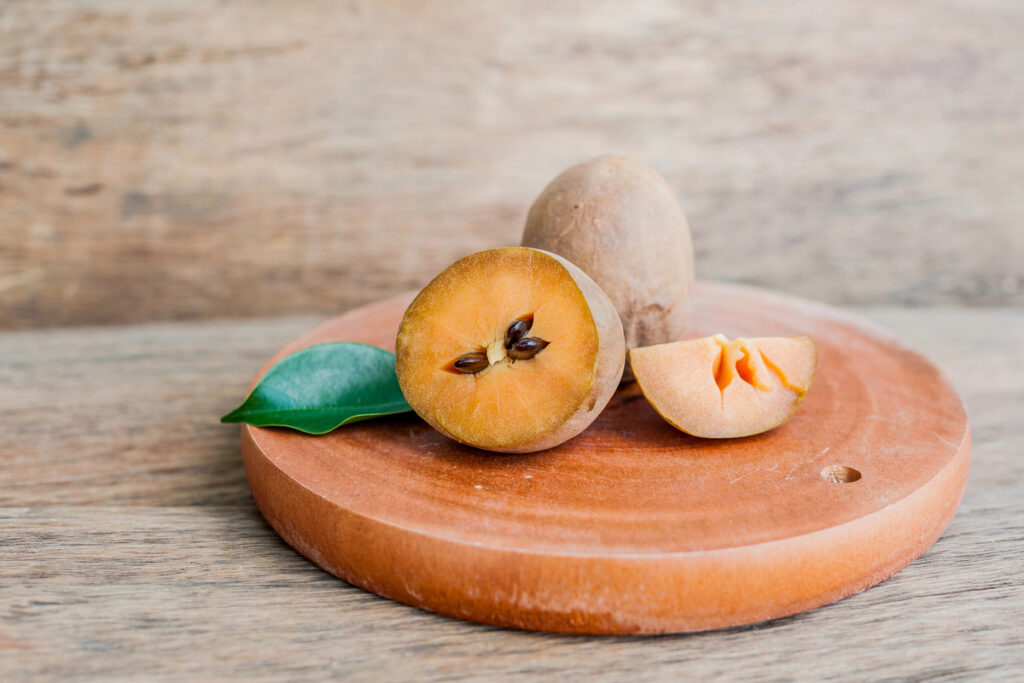
Sapodilla is a tropical fruit with brown, rough skin and sweet, grainy flesh. The taste is often compared to a mix of brown sugar and pear, with a hint of spice. Sapodilla is commonly eaten fresh but can also be used in smoothies, desserts, or even sauces.
The fruit is rich in vitamins A and C and fiber, making it both delicious and nutritious. Its sweet flavor makes sapodilla a popular choice in many tropical regions. If you enjoy sweet fruits with a rich flavor, sapodilla is one to try.
Pitanga (Surinam Cherry)
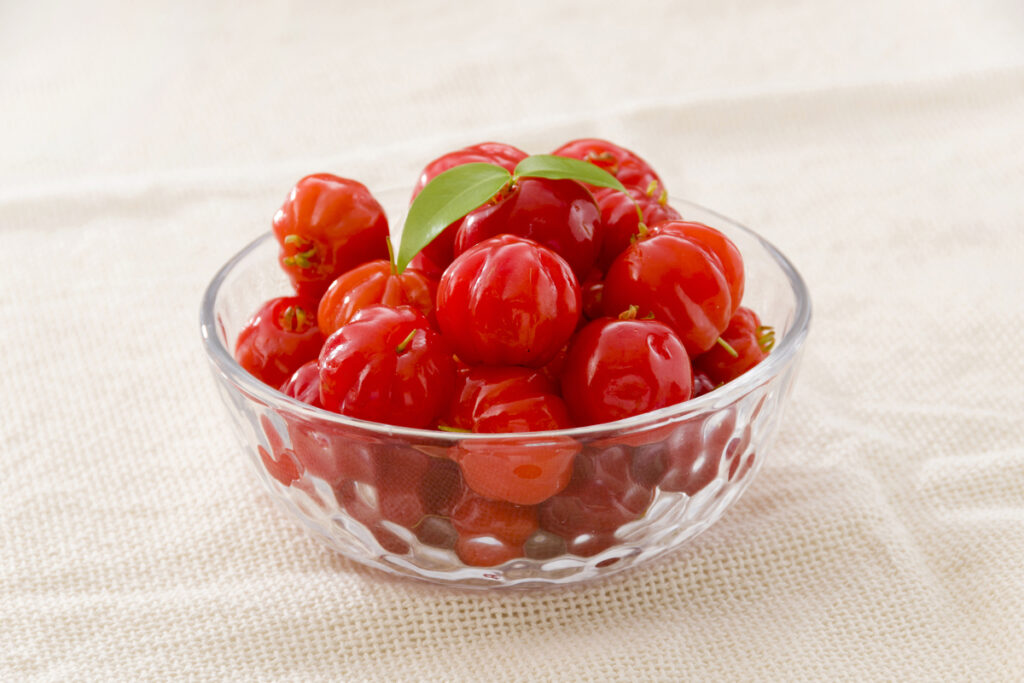
Pitanga, also known as Surinam cherry, is a small, bright red fruit that grows in tropical regions of South America and the Caribbean. It has a sweet and tart flavor with a hint of spice, similar to cranberries or cherries.
The fruit is often eaten fresh, but it’s also used to make juices, jellies, and desserts. Pitanga is high in vitamin C, making it a healthy and refreshing snack.
Its vibrant color and unique flavor make it a standout among tropical fruits. If you enjoy tart fruits, pitanga is a great exotic option to explore.
Soursop

Soursop is a large, green fruit with spiky skin and soft, white flesh. The flavor is sweet and tangy, often described as a mix of strawberry and pineapple. Soursop is commonly used in juices, smoothies, and desserts, but it can also be eaten fresh.
The fruit is rich in vitamin C and antioxidants, and it’s believed to have potential health benefits, including boosting the immune system.
Soursop is a popular fruit in the Caribbean and Central America, and its refreshing taste makes it a perfect summer treat. If you’re a fan of tropical flavors, soursop is a must-try.
Mangaba

Mangaba is a small, round fruit native to Brazil. It is known for its soft, juicy flesh and sweet-tart flavor. It has a distinct tropical taste, with hints of mango and peach. Mangaba is often used to make juices, ice cream, and jellies but can also be eaten fresh.
Mangaba is a nutritious snack packed with vitamins A and C and antioxidants. Although it is not widely known outside of Brazil, it’s a favorite among locals for its delicious flavor and health benefits. If you’re looking for a new tropical fruit to try, manga is a great option.
15 Grocery Items to Stock Up On Before Winter Price Hikes

As winter draws near, temperatures rise, as do grocery prices. The colder months often bring higher food costs due to increased demand, supply chain challenges, and seasonal shortages. To avoid the shock of winter price hikes, stock up on certain pantry staples and essential items.
15 Grocery Items to Stock Up On Before Winter Price Hikes
15 Places Where You’re Expected to Tip—But You Really Don’t Have To

Tipping has become a widespread practice in many industries, with the expectation that you’ll leave a little extra for good service. However, not every situation truly warrants a tip, even if you feel pressured to give one.
15 Places Where You’re Expected to Tip—But You Really Don’t Have To

